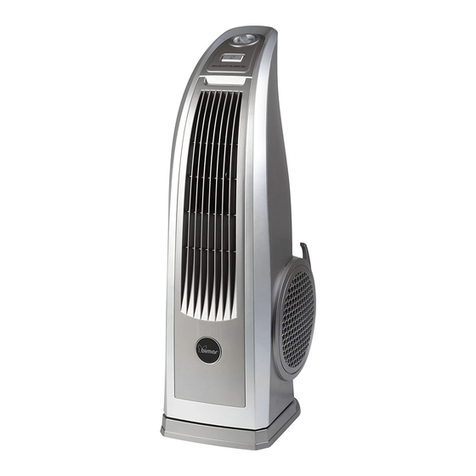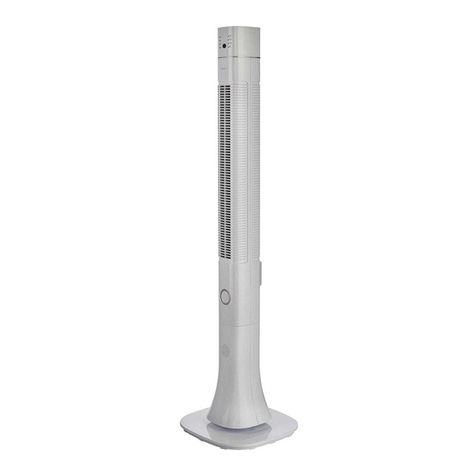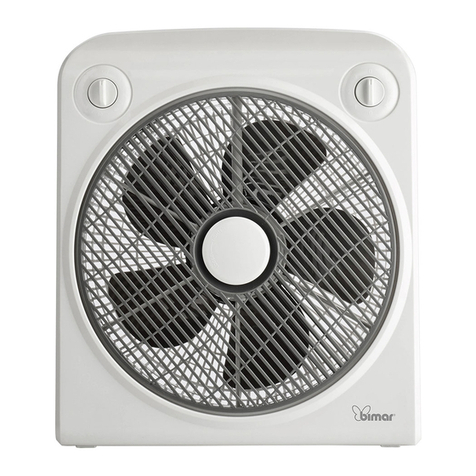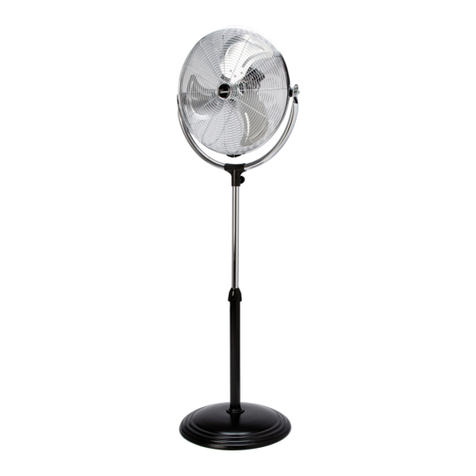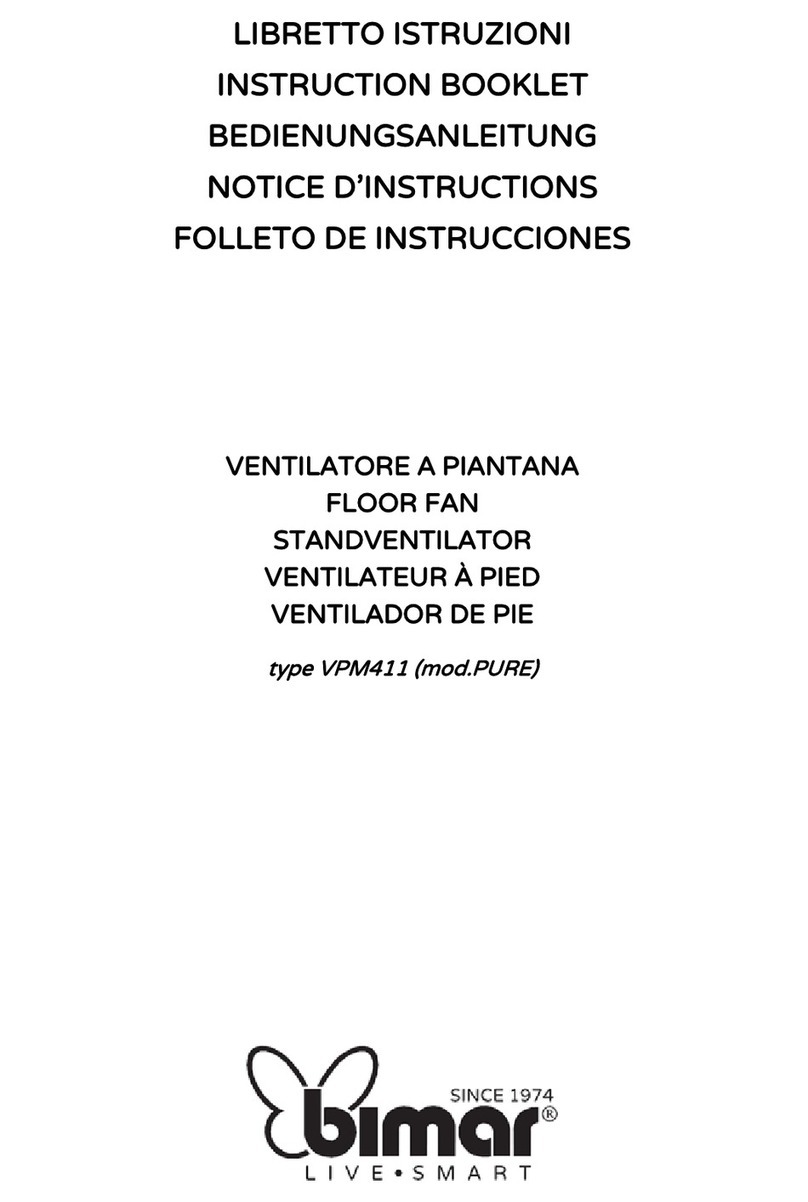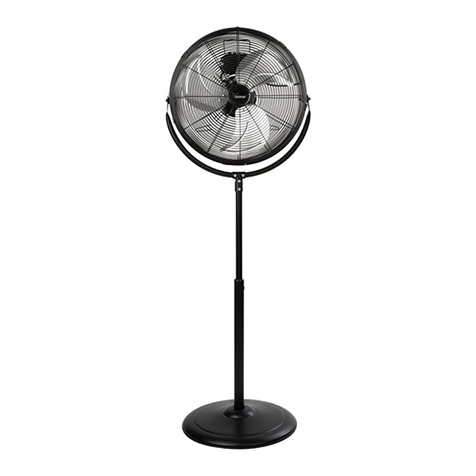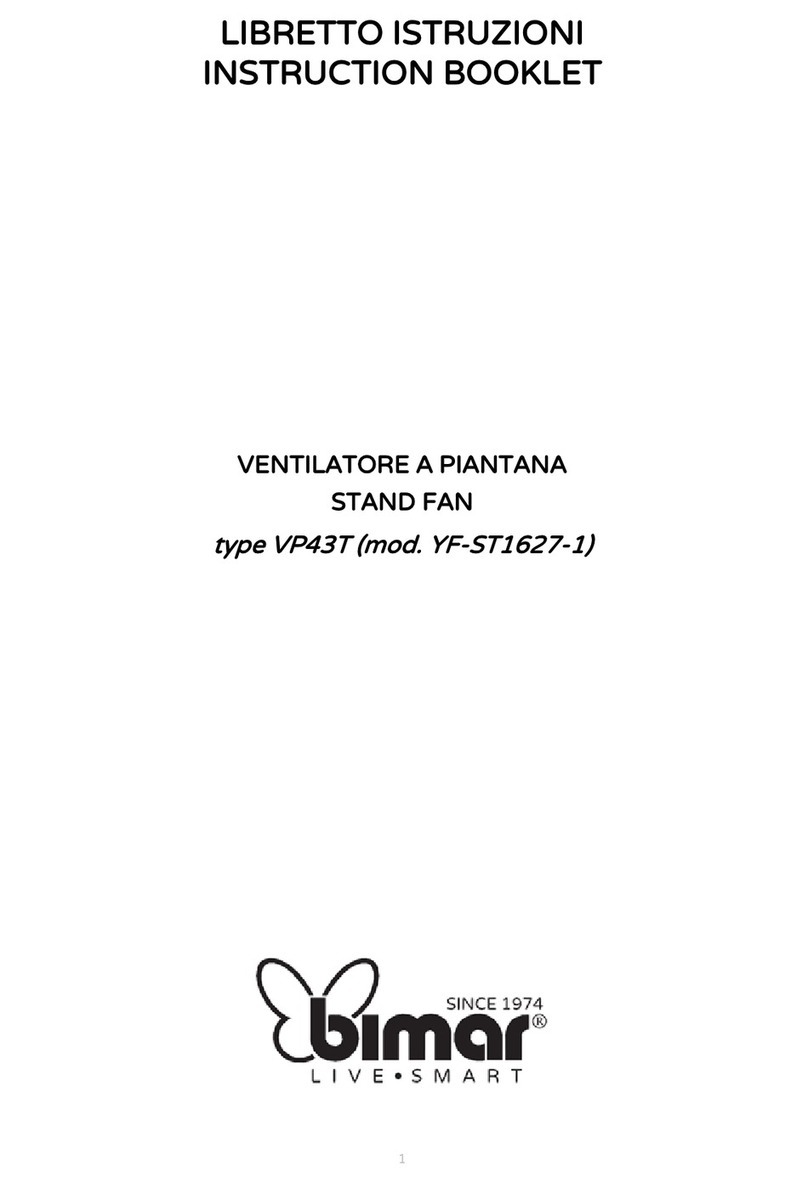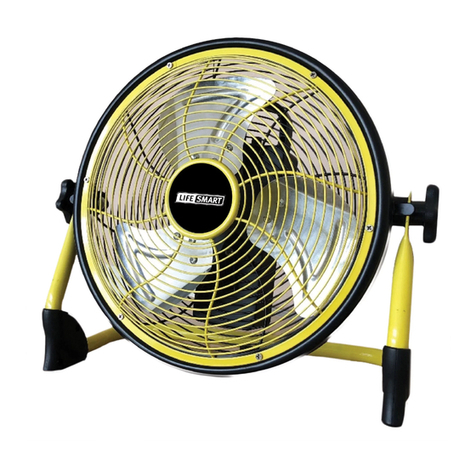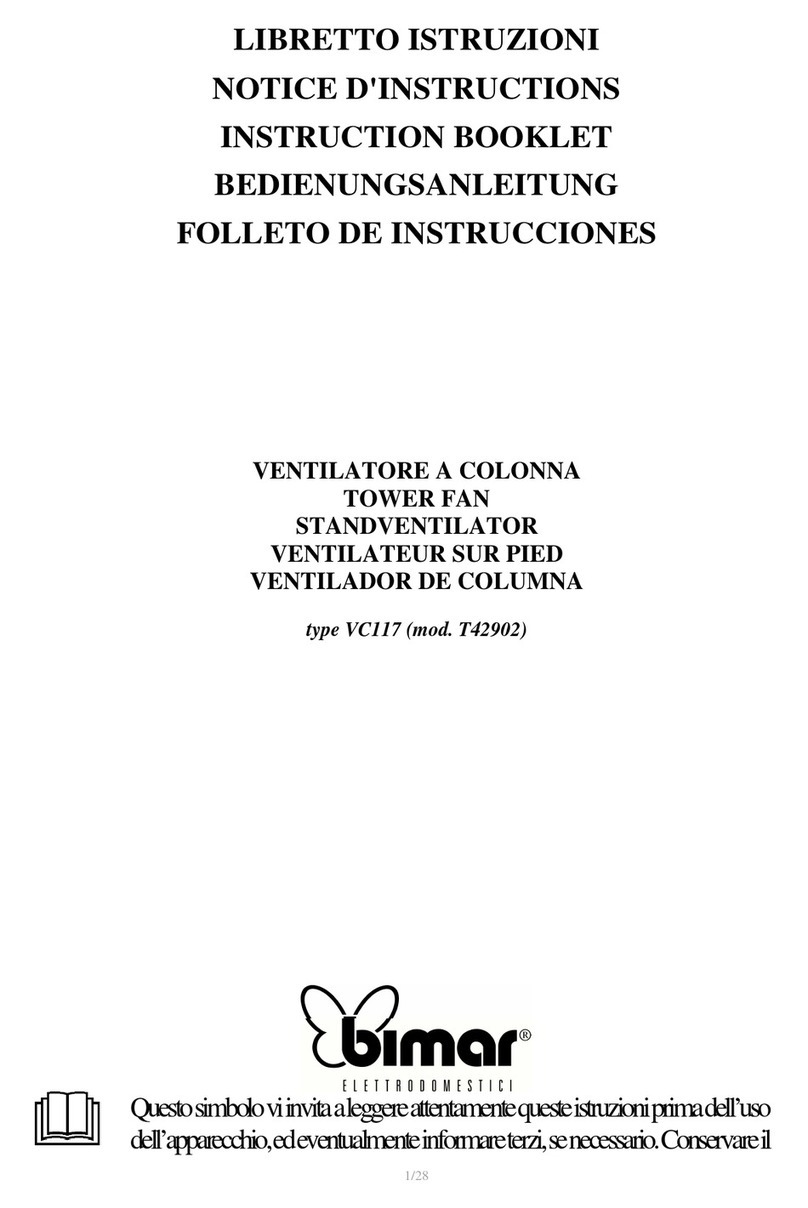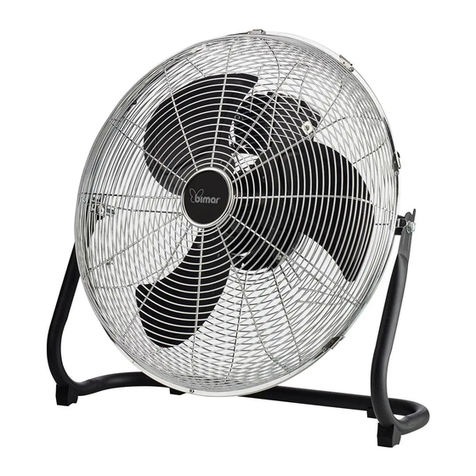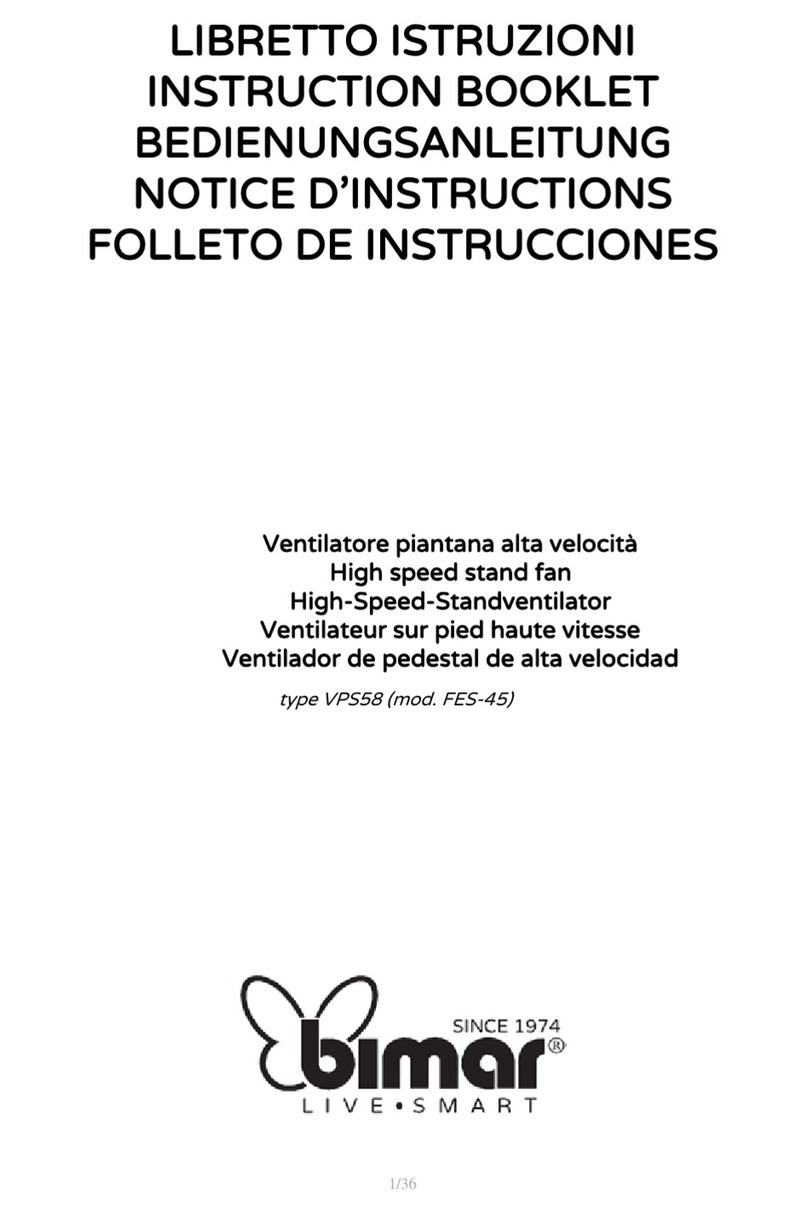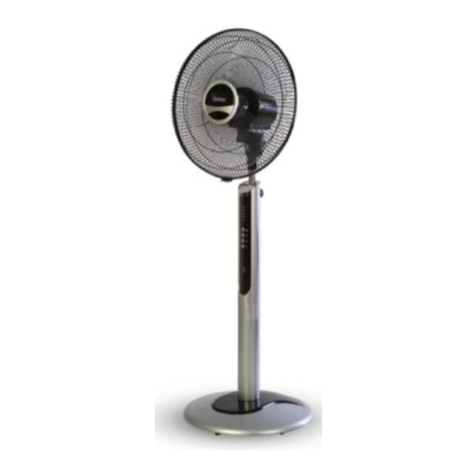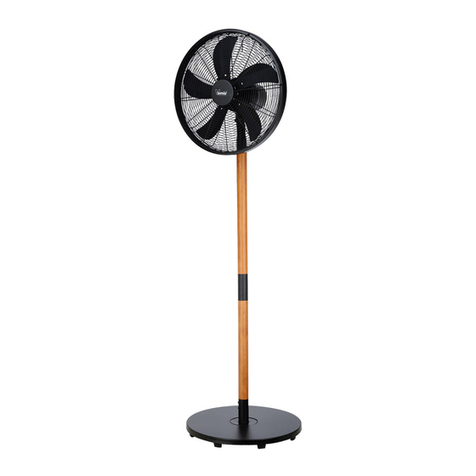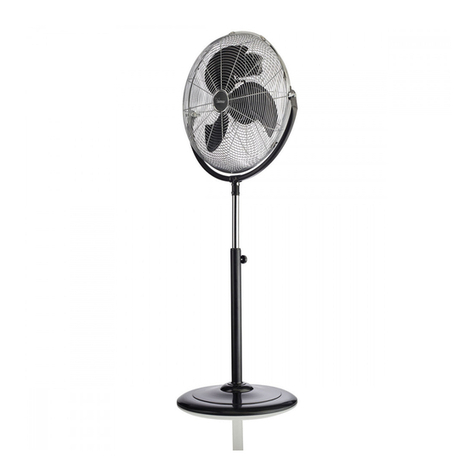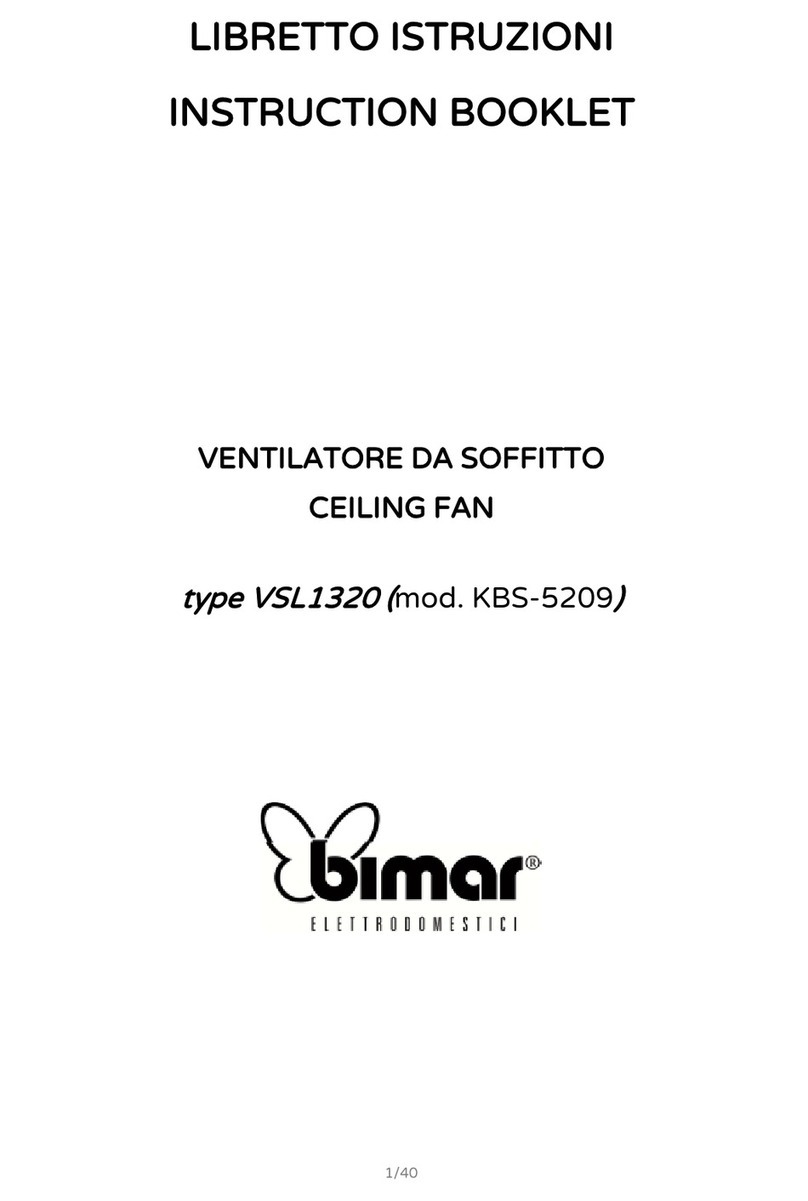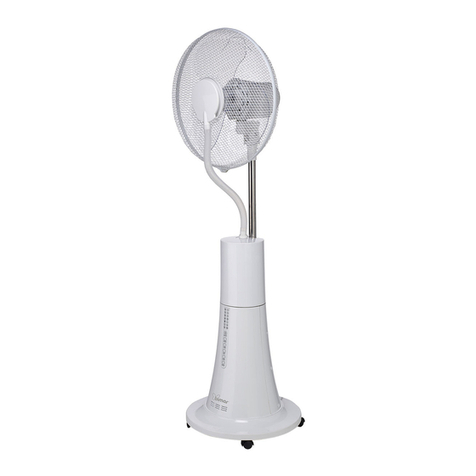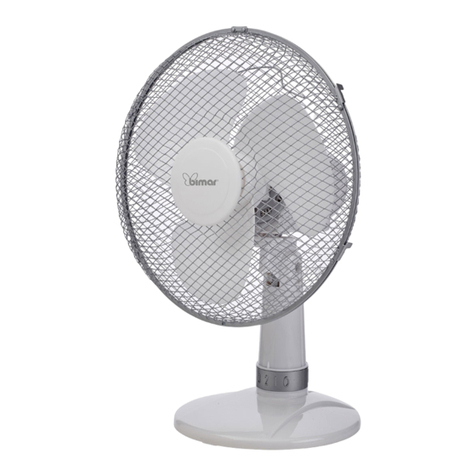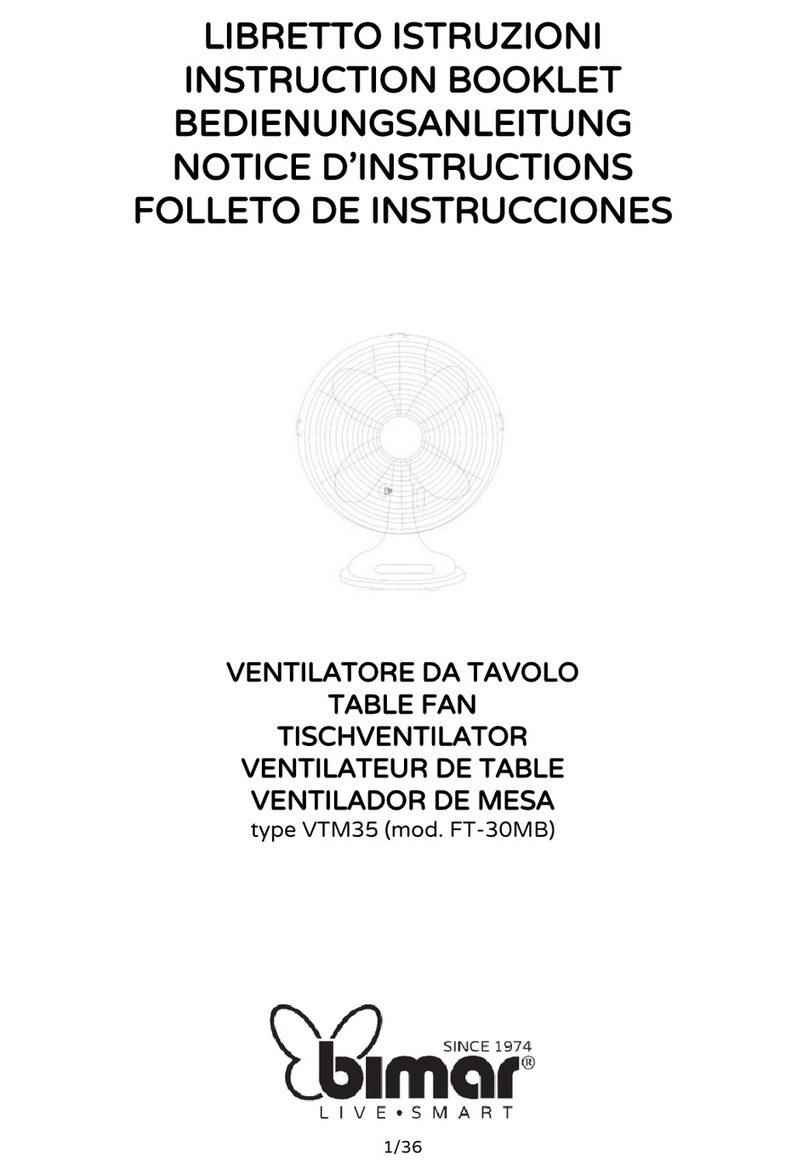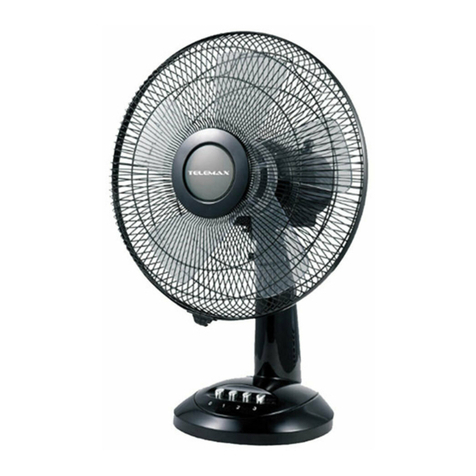
5/40
corretto;o ad altro dispositivo che possa accendere l’apparecchio
automaticamente,evitandocosìrischididanniapersone,animali
ocose.
In caso di guasto o cattivo funzionamento spegnere l’apparecchio
e farlo controllare da personale professionalmente qualificato; le
riparazionieffettuatedapersonalenonqualificatopossonoessere
pericoloseefannodecaderelagaranzia.
Assicurarsi che il ventilatore sia scollegato dalla rete di
alimentazioneprimaditogliereloschermodiprotezione(12).
INSTALLAZIONE
Dopo aver tolto l’imballaggio, assicurarsi dell’integrità dell’apparecchio; in caso di
dubbio non utilizzarlo e rivolgersi a personale professionalmente qualificato. Gli
elementi d’imballaggio (sacchetti di plastica, polistirolo espanso, chiodi, ecc.) non
devono essere lasciati alla portata di mano di bambini in quanto potenziali fonti
di pericolo, ma vanno smaltiti secondo le norme vigenti negli appositi contenitori
per la raccolta differenziata. Attenzione: eventuali adesivi o fogli pubblicitari
applicati sulla griglia, devono essere rimossi prima dell’uso dell’apparecchio.
Prima di collegare l’apparecchio controllare che i valori di tensione riportati sulla
targa dati corrispondano a quelli della rete elettrica. In caso di incompatibilità tra
la presa e la spina dell’apparecchio, far sostituire la presa con altra di tipo adatto
da personale professionalmente qualificato, il quale accerti che la sezione dei
cavi della presa sia idonea alla potenza assorbita dall’apparecchio. In generale è
sconsigliato l’uso di adattatori e/o prolunghe; se il loro uso si rendesse
indispensabile, devono essere conformi alle vigenti norme di sicurezza e la loro
portata di corrente (ampères) non deve essere inferiore a quella massima
dell’apparecchio.
Prima di ogni utilizzo verificare che l’apparecchio sia in buono stato, che il
cordone elettrico non sia danneggiato: in caso di dubbio rivolgersi a personale
professionalmente qualificato.
La presa di corrente deve essere facilmente accessibile in modo da poter
disinserire con facilità la spina in caso di emergenza.
Posizionare l’apparecchio lontano da:
-fonti di calore (ad es. fiamme libere, fornello gas, ecc. )







